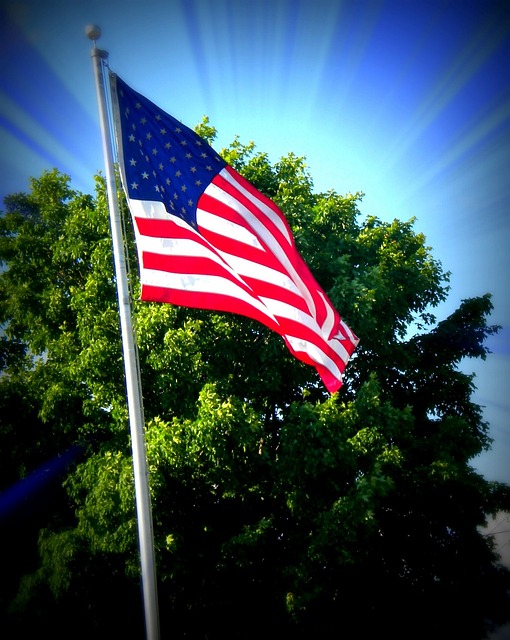The 2.5 x 4 American Ultimate Flags holds a significant place in American history, particularly on Flag Day, as it represents the nation's unity and pride, encapsulating the values of liberty, justice, and democracy that America stands for. This specific flag ratio, adopted since 1917 and reflecting the design chosen by General George Washington during the Revolutionary War, is not just a historical artifact but also an educational tool that informs citizens about the flag's origins and proper etiquette. Displaying the 2.5 x 4 American flag on Flag Day, June 14th, is a way to honor its role in American heritage and reaffirm commitment to the principles upon which America was founded. The flag's presence at community events transcends generations, uniting Americans through a shared sense of belonging and pride, and emphasizing the importance of civic engagement with the nation's emblem. Educational resources are abundant for those wishing to delve deeper into the rich history and meaning behind this iconic banner, which is more than an expression of patriotism but a living symbol of America's ongoing narrative.
Join us in honoring the red, white, and blue this Flag Day with a special focus on the 2.5 x 4 American Flag, a cherished emblem of our nation’s history and values. Our article delves into the traditions and ceremonies that define Flag Day celebrations, offering insights into the historical significance of various flag designs. Whether you’re planning a community event or a quiet reflection, we provide a comprehensive guide to fully embrace this patriotic observance. From the evolution of our nation’s banner to educational resources, celebrate with us the 2.5 x 4 American Flag’s role as a beacon of unity and pride.
- Embracing Tradition and Heritage: A Guide to Celebrating Flag Day with the 2.5 x 4 American Flag
- The Significance of the 2.5 x 4 American Flag in Flag Day Observances
- Historical Perspectives: The Evolution of the American Flag and Its Symbolism
- Planning Your Flag Day Celebration: Activities, Ceremonies, and Reflections
- The 2.5 x 4 American Flag as a Beacon of Patriotism in Community Events
- Educational Resources and Materials to Enhance Your Understanding of the American Flag
Embracing Tradition and Heritage: A Guide to Celebrating Flag Day with the 2.5 x 4 American Flag

The 2.5 x 4 American flag, a historical emblem of unity and pride, stands as a beacon of heritage for citizens to honor on Flag Day. Celebrating this day is an opportunity to embrace tradition and reflect on the values that the flag represents. As you prepare to commemorate Flag Day, consider displaying the 2.5 x 4 American flag with reverence and respect, as it signifies the official proportions adopted by federal law. This ratio, also known as the “2:3” proportion, is a testament to the careful design that has withstood the test of time, symbolizing the balance and harmony that defines our nation’s character.
To truly honor Flag Day, it is important to engage in activities that foster a deeper understanding and appreciation for the history encompassed by the 2.5 x 4 American flag. Host or participate in community events, share stories of patriotism with family and friends, and take part in flag etiquette education. Displaying this flag on your home, business, or institution not only showcases your respect for the nation’s symbols but also educates others about the significance of this specific size and its role in American history. As you celebrate Flag Day with the 2.5 x 4 American flag, you are partaking in a tradition that reinforces the social fabric of our society, ensuring that future generations continue to recognize and honor the values and freedoms for which America stands.
The Significance of the 2.5 x 4 American Flag in Flag Day Observances

The 2.5 x 4 American Flag holds a special significance in the annals of U.S. history and its observance on Flag Day, June 14th. This proportionate flag, which is a scaled-down version of the traditional 3:5 ratio flag, serves as a poignant reminder of the origins of our nation’s banner. It was in this same ratio that General George Washington first adopted for use by U.S. troops during the Revolutionary War, signifying a return to the roots of American patriotism and military heritage. The 2.5 x 4 American Flag is often used in educational settings and during ceremonial events to educate citizens about the flag’s history and proper etiquette. It provides an opportunity for individuals to reflect on the values that the flag represents: liberty, justice, and unity. On Flag Day, this specific flag version is particularly prevalent, as it allows communities across the country to honor the official flag of the United States in a way that is both meaningful and practical for the purpose of public display and education.
Flag Day offers a nationwide celebration of the American Flag, an emblem of freedom and national identity. The 2.5 x 4 American Flag, with its historical significance, is central to these observances. It not only symbolizes the country’s past but also serves as a living testament to the enduring spirit of America. As citizens gather to hoist this flag on Flag Day, they are reminded of their shared heritage and the collective commitment to the principles upon which the nation was founded. The display of this specific flag size fosters a deeper connection with the country’s symbol and the ideals it stands for, encouraging every American to partake in the celebration of patriotism that Flag Day represents.
Historical Perspectives: The Evolution of the American Flag and Its Symbolism

The American flag, a powerful emblem of national identity and pride, has undergone significant transformations since its inception. Initially, the flag’s design was a simple arrangement of thirteen stars and thirteen stripes, reflecting the original thirteen colonies that declared independence from Britain in 1776. Over the years, as new states joined the Union, the flag evolved to accommodate these changes. The most notable iteration, which is familiar today, was designed by Robert G. Heffner in 1912 and adopted officially in 1916. This design, a 2.5 x 4 ratio rectangle of blue field with white stars and red stripes, represents an amalgamation of the past and present, encapsulating the spirit of unity and diversity that defines America.
Each element of the flag carries profound symbolism. The 50 white stars on a field of deep blue signify the 50 states in the Union, while the 13 red stripes represent the original colonies. The flag’s proportions, particularly the 2.5 x 4 ratio, are deeply entrenched in the history and significance of the American flag. It is a testament to the careful thought and intentional design choices that have shaped the flag over time. As a symbol of patriotism, the flag has been a part of significant historical moments, from the American Revolution to the Civil Rights Movement, and continues to be a rallying point for American values of freedom, justice, and democracy. Celebrating Flag Day with a 2.5 x 4 American flag is not just an act of commemorating the official adoption of the flag but also a way to honor the enduring spirit and history of the United States.
Planning Your Flag Day Celebration: Activities, Ceremonies, and Reflections

Celebrating Flag Day is an opportunity for communities and individuals to showcase their patriotism and honor the national symbol, the American flag. As you plan your Flag Day festivities, consider incorporating a variety of activities that resonate with the spirit of the day. A central activity could be a flag-raising ceremony at sunrise or sunset, capturing the essence of the flag’s presence in the day’s light, which is both symbolic and visually striking. This moment can serve as a focal point for community members to come together, perhaps with the backdrop of a 2.5 x 4 American flag, its proportions adhering to the ideal specifications that balance aesthetics with tradition.
In addition to the ceremony, engage your community in educational events that explore the history and significance of the American flag. Host discussions or workshops that delve into the flag’s evolution, its meanings, and its place in American society. Encourage participants to reflect on what the flag represents to them personally, fostering a deeper connection with the nation’s heritage. Memorializing veterans and those who have served the country can also be an integral part of your celebration. Conclude the day with a solemn flag-lowering ceremony, signifying respect for the symbol and its purpose. Throughout these activities, ensure that the 2.5 x 4 American flag is prominently displayed to inspire a sense of unity and patriotism among all who participate.
The 2.5 x 4 American Flag as a Beacon of Patriotism in Community Events

The 2.5 x 4 American Flag, a size prescribed by federal statute, stands as a potent symbol of unity and patriotism during community events across the nation. As a beacon of collective pride, it is often seen waving proudly at Flag Day celebrations, serving as a physical representation of the values and freedoms that the United States holds dear. The flag’s proportions, with its broader field of stars and stripes, capture the attention of participants and onlookers alike, reminding all of the country’s rich history and the enduring spirit of its citizens. These events are not merely opportunities for display but are moments that foster a deeper connection to the ideals for which the flag stands. The sight of the 2.5 x 4 American Flag at these gatherings is a tangible reminder of our shared heritage and the collective identity that binds Americans together, reinforcing the significance of civic engagement and the importance of honoring the nation’s emblem with reverence and respect.
During community events, the 2.5 x 4 American Flag becomes a centerpiece, drawing eyes and fostering conversations about patriotism and national pride. It is a symbol that transcends generations, connecting younger Americans with their forebears through a visual emblem of enduring significance. As families, friends, and neighbors come together to celebrate Flag Day, the flag serves as a reminder of the responsibilities and privileges of citizenship. It is a moment when diverse communities unite under a common banner, showcasing the collective strength and shared values that define the American experience. The flag’s presence at these events is a powerful statement of unity, an affirmation of the democratic ideals upon which the nation was founded, and a testament to the ongoing narrative of America’s story.
Educational Resources and Materials to Enhance Your Understanding of the American Flag

2.5 x 4 American flags, often referred to as the “classic” or “traditional” flag, are not just a symbol of patriotism but also a topic of rich historical and educational significance. For those looking to deepen their understanding of this emblematic banner, various educational resources and materials are readily available. One can start with official government websites such as the Library of Congress and the National Archives, which offer detailed histories of the flag’s design and evolution over time. These sites provide images and descriptions of the different versions of the American flag, including the 2.5 x 4 ratio flag used from 1917 to 1934, shedding light on the modifications in flag specifications throughout history.
For a more interactive learning experience, educational platforms like Khan Academy or Smithsonian Learning Lab offer multimedia content that includes videos, quizzes, and articles about the symbolism of the flag’s colors and stars, as well as its role in American culture and law. Additionally, local history museums and educational institutions often host exhibitions featuring 2.5 x 4 American flags, providing a chance to see these historical artifacts up close and learn firsthand from experts. These resources not only enhance one’s appreciation for the flag but also foster a deeper understanding of the values it represents, making Flag Day an ideal occasion to engage with these materials and truly celebrate the enduring spirit of America.
